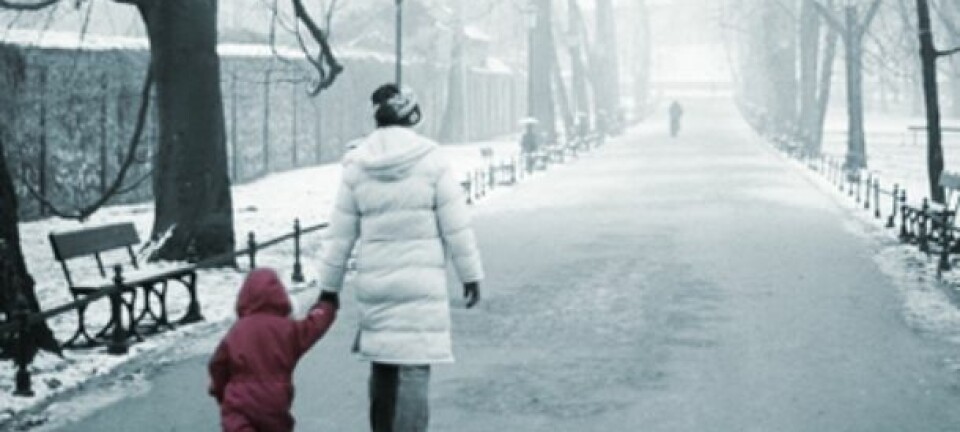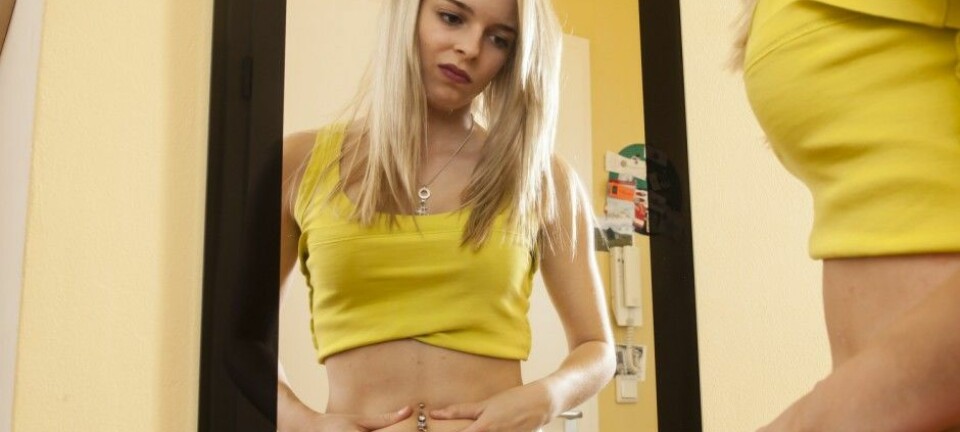
Anorexics misjudge their own reflection
When a girl diagnosed with anorexia views herself in the mirror she acquires a less correct impression of how she looks than when she simply relies on her memory of her body.
As a newly graduated psychologist, Maria Øverås became intrigued with how anorectics assess their own bodies.
“A key characteristic of patients with anorexia is their disturbed view of their bodies. Nevertheless, we have insufficient knowledge about how patients experience their own bodies and how psychologists should work with these problems.”
She wanted to know more about this predicament and it was her point of departure when she began working on a PhD alongside her job as a clinical psychologist.
Her doctoral dissertation entailed a study of how anorectic girls viewed their own bodies compared to healthy girls the same age – and what impacted their judgements.
She defended her thesis at the University of Oslo’s Department of Psychology on 10 June.
Overestimating their size
Studies have been made earlier about how anorectics judge their own body sizes. Several of these have found a stronger tendency among anorectics than healthy persons to overestimate their personal stature. In these studies, the participants evaluated the way they looked from their mind’s eye, from memory.
Øverås reconfirmed this tendency.
But her study also went a step beyond relating the participants’ mental perceptions, based on their memories. She compared their memories of themselves with what they saw when viewing themselves in a mirror.
The experiment
A group of young girls with and without anorexia participated in the study. Each participant got dressed in tight-fitting black clothing and was photographed against a white background. The photo was run through software and then projected in full scale on the wall in front of the participant.
Each participant was told that the photo that appeared was either larger or smaller than their actual size. They were then requested to alter the photo to match what they perceived as their real size.
They did this first by basing their estimate on their memories of their body size.
Then they repeated the task, this time while viewing their full figure in a mirror next to the projected photo on the wall.
The majority, including amongst the healthy girls, overestimated how large they really were. But Øverås found that the anorectic girls overestimated their own size much more than the healthy girls did.
Contradicting expectations, she found that the anorectic girls overestimated their body sizes considerably more when they viewed their mirror image than when they based their assessments on their memories.
Bewildering find
Maria Øverås was surprised by this result.
“I thought that memories would be more vulnerable for false sources and that the girls would assess their body sizes more accurately when they had a real mirror image right there to go by. It didn’t turn out that way. On the contrary the misjudged their looks even more when they viewed their own image in the mirror.”
Mirror anxiety
Øverås explains that many anorectics have anxieties related to mirrors. Many try to avoid them entirely.
“A possible explanation is that a girl with anorexia has a lot of anxiety connected to her own mirror image. It can activate a number of worries and provoke negative perceptions regarding their bodies. When such trains of thought are released the feeling of being too big might intensify. This in turn can impact capabilities of assessing their own body size.”
A study by the Norwegian Institute of Public Health has also shown that the body image of a patient with anorexia can vary several times a day. The findings indicate a close connection between emotional experiences and a patient’s self-image of his or her body. When anorectics are sad or frightened they often experience themselves as fat. But they can have a fair sense of their body size when they are happy.
Everyone fat in a mirror?
Øverås says that for all of us mirror images are less objective than we think, whether we have an eating disorder or are healthy.
“When you observe yourself in the mirror you think you are seeing yourself full-sized. Actually a reflection in the mirror is just half its real size. This is an example of an optical illusion.”
A study from 2006 shows that test persons who were asked to estimate how large their mirror images were judge completely off the mark.
The finding can be used in treatment
Øverås thinks this study can contribute new knowledge about the body perception disturbance among anorectic patients.
“In my clinical work I talk to my patients about these findings. This can be a good point of departure for a discussion of how persons cannot always trust their self-perception of their bodies,” she says.
------------------------------------------------
Read the Norwegian version of this article at forskning.no
Translated by: Glenn Ostling
































